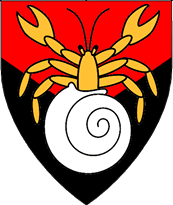By Heinrich von Holstein
Item kaldes crawt | Decoque alba copita* (!) olerum
et recipe ii partes Sinapis et unam partem mellis et mi
sce liquorem cum vino carui et anisi et impone olera
et da frigido modo (?). Eodem modo fit de piessen nisi
quod ibi decoquuntur herbe et radices et erit idem ut supra
(Salzburg, UB: M I 128: Fol. 337r)
Kaltes Kraut
Koche Köpfe vom Weißkraut und nimm zwei Teile Senf und einen Teil Honig und mische die Flüssigkeit mit Wein, Kümmel und Anis. Gib die Kohlköpfe hinein und serviere sie kalt. Auf die gleiche Art macht man das mit weißen Rüben, aber die sollen gekocht werden mit Blättern und Wurzeln, und dann wird es wie oben beschrieben.
(German translation, University Library of Salzburg)
Cold Cabbage
Cook a head of white cabbage and take two parts mustard and one part honey and mix the liquid with wine, caraway, and anise. Add it to the cabbage and serve it cold. In the same way, you can make this with white turnips, but you should cook it with leaves and roots, and do it as described above.
(English translation, mine)
This is a cold cabbage salad with a spiced honey-mustard dressing. Though found in a German manuscript, the cook decided to write this recipe down in Latin. It is a simple but strongly-flavored dish. Redaction based on “Cabbage” from Medieval Cookery website.
Ingredients
- 1 large head of cabbage
- 4 Tbsp mustard [1]
- 2 Tbsp honey
- ½ cup white wine vinegar [2]
- 1 ½ cup white grape juice [2]
- 2 tsp caraway seeds
- 1 tsp anise seeds
Directions
Shred the cabbage and boil until just barely tender [3]. Strain, dry, and allow to cool. Grind spices, mix together with mustard, honey, vinegar, and grape juice. Mix the dressing with the cabbage and serve cold.
Notes
[1] This was home-made mustard of 3 parts yellow mustard seed, 1 part black mustard seed, and white wine vinegar.
[2] The original recipe calls for wine. Out of an abundance of caution, I opt not to serve an un-boiled wine sauce to minors or people with alcohol sensitivities. I have substituted a mix of white wine vinegar and white grape juice instead. Honestly, I think the added sweetness and acidity end up enhancing the dish anyway.
[3] Medieval Europeans seem to be prejudiced against fresh vegetables. Period cooks might have boiled this to mush. Modern cooks would serve it raw like coleslaw. I have compromised by boiling it just enough to soften the texture, but no more.
Sources
Myers, Daniel “Cabbage” Medieval Cookery 2019. Web.
http://medievalcookery.com/recipes/cabbage.html
Universitätsbibliothek Salzburg – Abteilung für Sondersammlungen, M I 128: Medizinisch-
naturwissenschaftliche Sammelhandschrift, Vienna 2016
http://www.ubs.sbg.ac.at/sosa/lucull/lucull128.htm
http://www.ubs.sbg.ac.at/sosa/lucull/MI128(62).htm
